- Home
- Keith Douglass
Nuke Zone c-11
Nuke Zone c-11 Read online
Nuke Zone
( Carrier - 11 )
Keith Douglass
The Ukraine tricks the U.S. into thinking that Turkey — their own ally — had launched the nuclear attack against the U.S. Sixth Fleet. After all, the U.S. needed to be reminded who owned the waters they had entered. Now “Tombstone” Magruder and the new Sixth Fleet are out to stop the war before it starts. But with treacherous allies and stealth technology, the rules of battle have changed. And Magruder must face the most threatening question of his life: In an age of computer warfare, how do you tell your friends from your enemies?
Nuke Zone
Arsenal
1
Monday, 3 September
0400 Local
MiG 42
Five Hundred Feet above the Black Sea
Fog streamed past the single-seat cockpit, cloaking the MiG-31 in a shroud of condensed moisture. Ukrainian Commander Yuri Kursk could barely make out the tendrils streaking past, writhing and weaving themselves together in an unholy white blanket that seemed to suck the warmth out of the cockpit. He shivered, as much from the stark realization that the mission was finally underway as from the chill insinuating itself through layers of flight suit and heavy undercoating to penetrate his bones.
He kept up his scan, glancing continually from the dimly lit green status indicators on the panel in front of him to the fog outside. Had it not been for the reassuring thrum of his two Perm/Soloviev D-30F6 turbofans, he could have believed that he was alone in the air, suspended motionless above the Black Sea.
He goosed the throttle slightly just to feel the change of vibration radiating through the fuselage. It was reassuring, a link with reality, a reminder that he was not some alien creature forever entombed in fog, but a warm-bodied, living human surrounded by the most advanced fighter ever built in Russia. It was all too easy to forget that, given the mechanical and robotic way he was treated by his superiors. These moments in flightlonger than moments this timewere his freedom, the payoff that made the hours of intricate political indoctrination, psychological testing, and continuous intrusive watchfulness of the Ukrainian Psychological Services all worthwhile. They might believe they owned his mind and body on land, but screaming through the darkness, he knew the truth.
The MiG-31 Foxhound was pure freedom in motion, an advanced strategic interceptor that had been intended to take the Soviet Union into the next century as its primary carrier-based aircraft. It stretched seventy-four feet from the tip of its Flashdance phased-array fire-control radar housed in the nose to the tips of its slightly canted vertical stabilizers. With a wingspan of forty-four feet, it possessed a vastly increased range over its predecessor fighter airframes. Carrying external fuel tanks and lightly loaded, it possessed an unrefueled range of almost 1800 nautical miles.
He’d need every inch of that too. While the Foxhound was capable of reaching Mach 2.35, its most economical cruising speed was Mach.85. If he were detected, forced to evade, or even to engage in real combat, his effective range would drop dramatically. As it was, he would be running on fumes by the time he returned to the Crimean Peninsula.
Just like the rest of Ukraine. He snorted, thinking how apt the analogy was, congratulating himself on his own wit. The remnant of the former Soviet Union had been out of fuel for years now, as loath as its current leaders were to admit that. But no amount of political denial could conceal the truth forever, just as his engines couldn’t run on wishes and hopes. He shifted slightly in the ejection seat, keeping the blood flowing, settling in for a long flight. No, as fiscally and politically bankrupt as his country might be, it wasn’t dead yet. It still could pull some surprises out of its ass from time to time.
Like this one.
The MiG-31 was proof of it. In addition to the advanced power plant, it possessed a host of subtle and deadly avionics carefully crafted by Ukrainian engineers working with pirated U.S. Stealth technology. Every inch of its thin fuselage was wired into the central counterdetections module. It was less a coating for the aircraft than an oddly shaped phased array of electromagnetic detectors and transponders. Capable of intercepting radar signals and generating out-of-phase canceling waves, the MiG-31 had the ability to virtually disappear from the scope of any radar operator within range. Additionally, the integrated suite of sensors and transponders could easily mimic the radar characteristics of a wide range of commercialand nonthreateningaircraft.
As it would shortly. The MiG-31 was currently flying in full stealth mode, and Yuri felt confident that none of the radar sites ringing the Black Sea had the slightest inkling that he was transiting through their area at Mach 1. Yuri intended to stay in this mode during his transit across the Black Sea as well as his overflight of Turkey.
After that, as soon as he was over the Aegean Sea, the invisible night marauder would assume the identity of a Turkish commercial air flight departing Istanbul for London. If all went according to plan, the Americans would merely think that their copy of the published Turkish commercial air flight schedule was in error. Yuri knew that that happened often enough for it not to be alarming to either USS La Salle, the Sixth Fleet command ship now loitering in the Greek Isles, or her Aegis cruiser escort, USS Shiloh.
He could have continued the entire flight in stealth mode, but to do so would defeat the entire purpose of the exercise. It was not only necessary that the United States be reminded who owned this portion of the world’s oceans, but that they also be convinced that the cause of their sudden disgrace was Turkey. By simulating the appropriate size, altitude, and IFF codes of a Turkish aircraft, Yuri would catch them completely off guard.
Yuri eased the throttle back down to the economical Mach.85, then fished around in the upper-leg flight-suit pocket until his fingers closed around a foil-wrapped chocolate bar. He pulled it out, shucked off the protective covering, and bit greedily into it.
It was one of the true luxuries of being part of this elite strike force, being issued precious Swiss chocolate bars for in-flight meals.
0430 Local
Combat Direction Center (CDC)
USS La Salle
One hundred miles off the coast of Greece, USS La Salle steamed slowly north. Forty miles ahead, the island of Samothrace was visible only on the SPS-10 radar that echoed its images to the bridge on the SPA-25G repeater.
The fog that had plagued her around midnight was slowly dissipating, responding to the gentle easterly wind that had sprung up around 0200. The massive vessel sliced easily through the sea state two swells, throwing off curling bow waves of churning white bubbles and aqua water. Overhead, the first few stars were starting to peek out through the clearing sky.
“How about some coffee, sir?”
The operations specialist extended the white disposable cup to the young black lieutenant. “I made it myself.”
“What, no latte? I’d expect better on the Sixth Fleet flagship.” The lieutenant smiled as his fingers curled around the white stippled surface.
Operations Specialist Third Class Matthew Carey grinned ruefully. “Some espresso would be damned fine about now, wouldn’t it? These mid-watches…” He shrugged.
Lieutenant (junior grade) Jules “Skeeter” Harmon took a sip from the steaming cup. He grimaced. “Better than most, bearing but a slight resemblance to JP5 this time.”
“We aim to please, Lieutenant. The customer’s always right, even if he is a TAO nugget hiding out from the carrier.”
Skeeter set the cup down on his TAO console with a little more force than necessary. “Damn it, Carey, I’m not hiding out! I told you beforesome idiot in D.C. screwed my orders up. I’m supposed to be on Jefferson, not La Salle. Can I help it if they decided to leave me stashed here while they figure it out? Don’t you think I’
d rather be on the bird farm than trapped on this gator?” He gestured around the Combat Direction Center, which was only half manned under peacetime steaming conditions. “Do you think any self-respecting aviator would want to be here?”
Carey grinned. “You’re here.”
“For another two weeks.” Skeeter kept one hand curled around the coffee cup just in case the ship lurched unexpectedly, a holdover habit from his midshipman cruise days aboard much smaller ships. “Besides, that gives Jefferson time to prepare, seeing as how I’m such a hotshot aviator. You know, I hate to embarrass the admiral by showing up before he’s ready for me.”
Carey stifled a snort. The lieutenant was a good guy, better than most of the black-shoe surface officers that inhabited the amphibious command-and-control ship. You could talk to him, and he didn’t get all bent out of shape over the small stuff, like the “shoes” did. That made the mid-watch hours more endurable, a fact for which every member of Watch Section Two aboard the Sixth Fleet flagship was grateful.
Still, there were times when Carey wondered whether the newly minted aviator had any idea of what he was getting into. Sure, he knew Skeeter had been through the training pipeline, and had already completed the required carrier qualifications while assigned to the RAGthe Replacement Air Groupthat gave the nuggets their first practical look at the intricacies of landing on board their floating airfields. And from what he’d heard, Lieutenant Harmon was supposed to be one damned fine pilot.
Mess-decks intelligenceMDIhad it that he had graduated at the top of his class, both in basic and at the RAG. The enlisted troops liked him, about as much as they were prepared to like any junior officer who hadn’t yet proved his worth on a six-month cruise. Sometimes it was better not to get too attached to officers until you knew what they were really made of. How much of his own growing reputation did the lieutenant himself believe? Carey wondered. All of it? He shook his head, and his congenial expression clouded over. He hoped not. After two years in the Navy, Petty Officer Carey knew what Lieutenant Harmon had yet to learnthat the sea held surprises of its own for the men and women who sailed on her.
“I expect they’ll be glad to get you on board,” Carey said finally. “There’s bound to be some junior officers who are getting tired of pulling Alert 15 sitting on the flight deck.” He glanced slyly at the lieutenant j.g. “You’ll be the ‘George,’ won’t you, sir?”
Lieutenant Harmon frowned. “Yeah, and I’m not looking forward to it.”
Being the most junior officer in a squadron carried with it a host of collateral duties that took away from flying and sleeping time. Movie officer, welfare and recreation officer, and general all-around shitty-little-jobs officerthat was the domain of the George.
“I think they call it an opportunity to excel, an OTE,” Carey said, affecting the slight drawl that so many pilots used when airborne. Even aviators born in the northernmost sections of Maine sounded like Chuck Yeager over tactical, and the enlisted technicians who supported them picked up the habit.
Harmon shrugged. “They can load me up with all the collateral duties they want to, but I joined this man’s Navy to fly. And once they see me…” The aviator let his voice trail off and shot a significant look at the young operations specialist. “You don’t believe me, do you?”
“Now, sir, I didn’t-” Carey started to protest.
Skeeter cut him off with a lazy wave of his hand. “That’s all right. You haven’t flown with me. And neither have they.” He pointed at the large-screen display that dominated the forward part of the compartment. “VF-95 doesn’t know it yet, but I’m about to set a Tomcat record for most consecutive good traps on board. Mosquitoes don’t bolterand neither do I,” he said, referring to the maneuver a carrier aircraft executed when it missed catching the wires on the aft of the flight deck.
“I’m sure theywhat the hell?” Carey’s head snapped forward to stare at the large-screen display. “What’s that?”
Skeeter spun around in his swivel chair to face forward, and his fingers reached for the trackball to position his cursor over the new air contact flitting across the upper edge of his screen. His fingers fumbled for the right buttons, and finally the relevant tactical information appeared on the small screen at the side of his desk. He took a deep breath, then let it out slowly. “Damn, Careyyou’re gettin’ jumpy. Nothing but a commercial air flight.”
Carey shook his head, his frown deepening. “They’re not scheduled for one, sir. This is dead timethe ninety-minute gap when there’s not any civilian flights scheduled.” He took a quick look at the status display. “And it’s moving too fast.”
“Five hundred knots? That’s well within speed range of a commercial aircraft,” Skeeter countered. “Besides, IFF indicates it’s a commercial air flight.”
“Like I said, he’s not on my schedule. Besides, they’re usually at four hundred and fifty knots,” Carey said, “not five hundred. Why would he be going fifty knots faster than every other COMMAIR flight that out-chops Turkey?”
Skeeter shrugged. “Fast is good.”
“It’s out of parameters, Lieutenant,” Carey said stubbornly. “Recommend we designate it as a contact of interest and ask the cruiser what they think.”
“Might as well, seeing as how you’ve got a bug up your ass about it. Besides, it’ll give those shoes something to do besides play video games on that Spy I system. I’ll designate it as a contact of interestif I can find the damnedah, there it is.”
The display changed the symbology associated with the contact and sent the data out to the other ships over Link II, the tactical net that allowed the ships in the battle group to share information. “But the cruiser is net control. When she starts howling, you’re going to have to talk to them.”
“Be glad to. The track supervisor on Shiloh is an old shipmate of mine, and he’ll be thinking exactly the same thing.”
Skeeter glanced up at him. “Bet?”
“You got it, sir. Loser buys an espresso machine for the winner’s mess.”
Skeeter smacked his lips. “Can’t wait.”
0440 Local
MiG 42
Yuri extended the retractable infrared pod housed under the cockpit and stared at the display, Useless, as he’d suspected it would be. Still, the admiral had been quite adamant about conducting an IR search before activating his radar. Soviet tactics, Soviet thought processes. He sighed. Until they overcame this institutionalized mandate to control every small tactical detail on a mission, Ukrainian air would continue to be hampered. Especially on missions like this. What was the point of even trying the IR sensor in fog as dense as this?
None.
Moreover, the aircraft was already adequately configured to search for the Sixth Fleet flagship without revealing its own identity. The Flashdance radar had been meticulously modified to provide an alternate operational mode, one that closely simulated the ubiquitous Furuno surface-ship search radar found on most other world ships. At five hundred feet, he could easily be mistaken for any one of the thousands of tugs, fishing boats, or other commercial vessels that plied these waters. And the contrast between a radar blip emitting the characteristics of a Turkish commercial air flight and an electronic signature mimicking a civilian surface craft would undoubtedly add to the confusion. In theory, the flagship’s electronic-warfare Specialists would simply assume that the target-processing algorithm had inadvertently attached the electromagnetic signature to the wrong blip.
In theory, at least.
And really, all he needed was four minutes. Four minutes of precious time to close within range of the amphibious flagship, fire his weapon, and get the hell out of there.
Yuri felt the adrenaline flooding his system, noticed the tingling in his fingertips and the light, giddy feeling of over-confidence it generated. It was an all-too-familiar sensation, one that he’d learned to ignore in Afghanistan while flying more primitive Soviet fighters.
He glanced over at the GPSthe G
lobal Positioning System indicatorsand watched the green luminescent digits slowly click over.
Based on the Ukrainians’ best intelligence and the Americans’ public announcements of their own deployment schedules, the flagship should be located within one hundred miles of a point immediately in front of him.
One hundred miles, Still a hell of a lot of ocean to search, and visual and infrared would certainly be useless today. He reached over and toggled on the radar, flipping the switch into the commercial-air-simulation position.
Even better than being part of his deception, the radar would actually work in this mode, providing a complete look-down/shoot-down picture of the water below him.
He eased back on the yoke, gaining altitude. Eight thousand feet, he decided. A brief foray up to that altitude to get a good, solid picture of what was around him, then pop back down out of counterdetection range.
With any luck at all, it would all be over in ten minutes.
A slight additional whine haunted the airframe as the radar spun up and came on-line. His heads-up display sprang to life with a speckling of green clutter that quickly resolved itself into the fuzzy-edged lozenges indicating radar contact.
Thereit had to be La Salle. The large one loitered in deep water.
A smaller contact, probably Shiloh, was positioned twenty miles astern of the massive flagship. Yuri calculated the intercept, then dove back down to the deck for the concealment of sea clutter.
0441 Local
Combat Direction Center
USS La Salle
“Sir! You’ve gotta listen to me!” Carey’s voice was deeper, harder. “There’s something going on with this contact I don’t like.” He pointed to the automated status board.
Skeeter stared at the display and frowned. “The altitudeit’s not matching up, is it?”
“No, sir. And look at the EWthe electromagnetic-warfare signalgoing with it. A Furuno.”

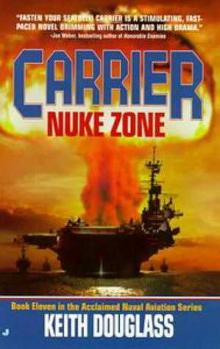 Nuke Zone c-11
Nuke Zone c-11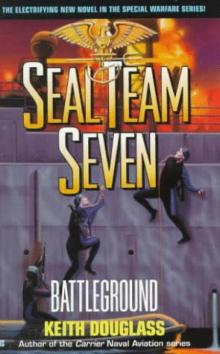 Seal Team Seven 6 - Battleground
Seal Team Seven 6 - Battleground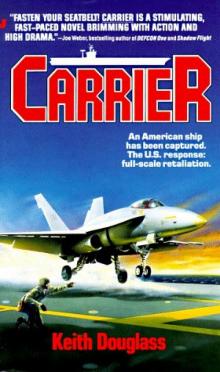 Carrier c-1
Carrier c-1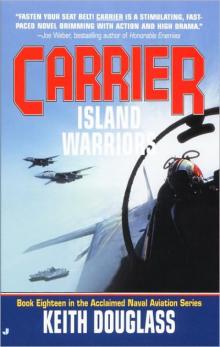 Island Warriors c-18
Island Warriors c-18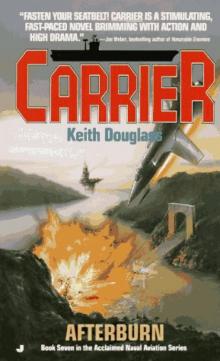 Afterburn c-7
Afterburn c-7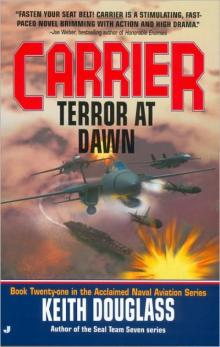 Terror At Dawn c-21
Terror At Dawn c-21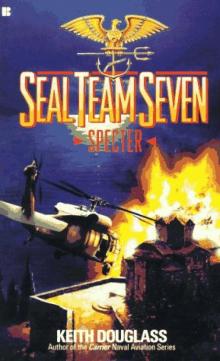 Specter sts-2
Specter sts-2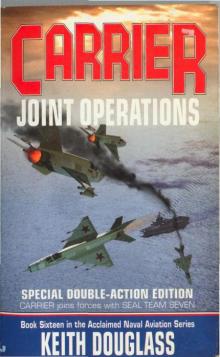 Joint Operations c-16
Joint Operations c-16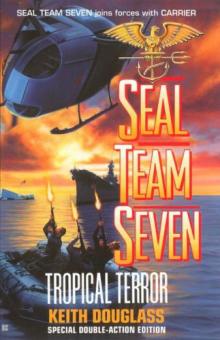 Tropical Terror sts-12
Tropical Terror sts-12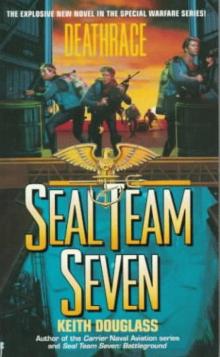 Seal Team Seven 7 - Deathrace
Seal Team Seven 7 - Deathrace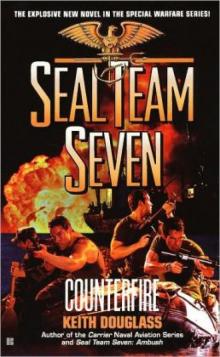 Counterfire sts-16
Counterfire sts-16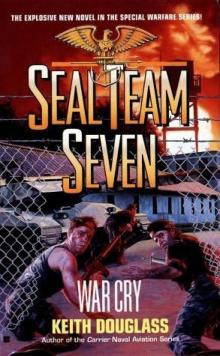 War Cry sts-9
War Cry sts-9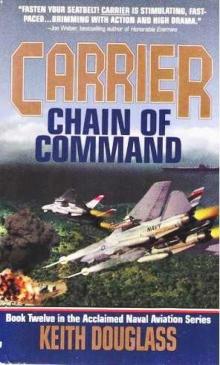 Chain of Command c-12
Chain of Command c-12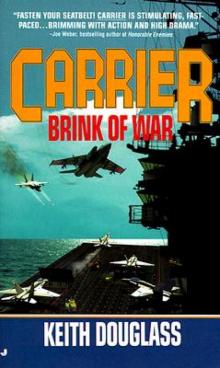 Brink of War c-13
Brink of War c-13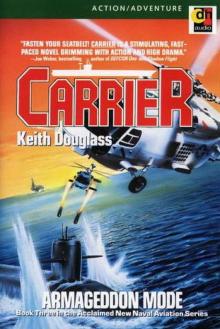 Armageddon Mode c-3
Armageddon Mode c-3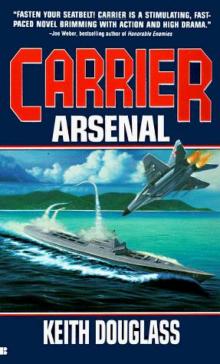 Arsenal c-10
Arsenal c-10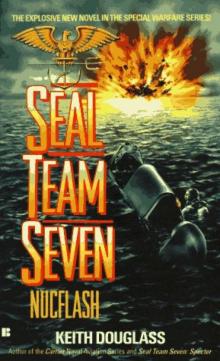 Nucflash sts-3
Nucflash sts-3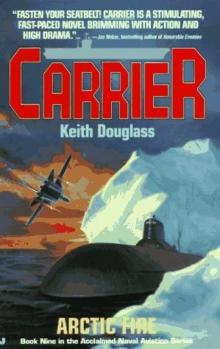 Arctic Fire c-9
Arctic Fire c-9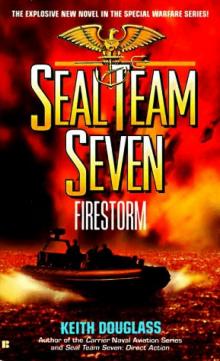 Firestorm sts-5
Firestorm sts-5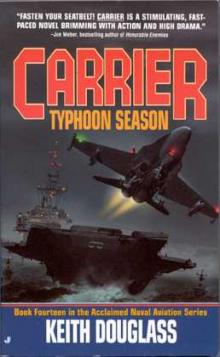 Typhoon Season c-14
Typhoon Season c-14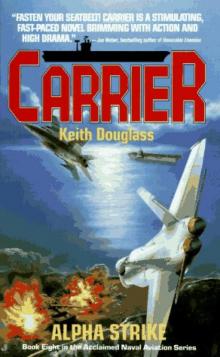 Alpha Strike c-8
Alpha Strike c-8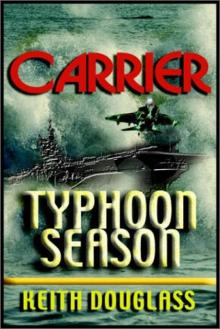 Carrier 14 - TYPHOON SEASON
Carrier 14 - TYPHOON SEASON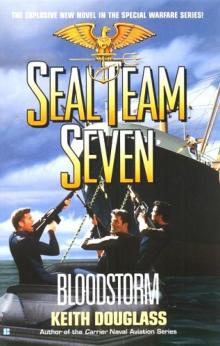 Bloodstorm sts-13
Bloodstorm sts-13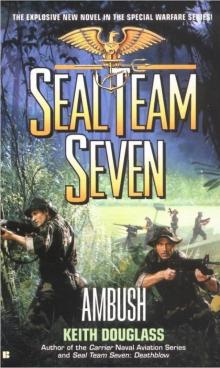 Ambush sts-15
Ambush sts-15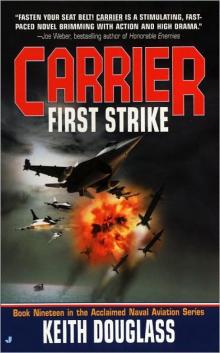 First Strike c-19
First Strike c-19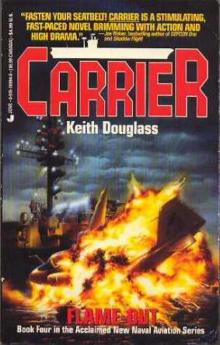 Flame Out c-4
Flame Out c-4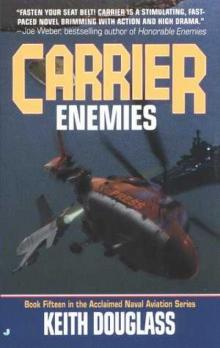 Enemies c-15
Enemies c-15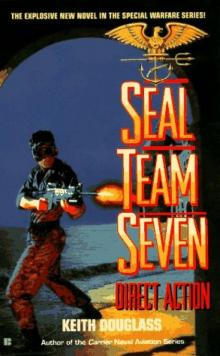 Seal Team Seven 04 - Direct Action
Seal Team Seven 04 - Direct Action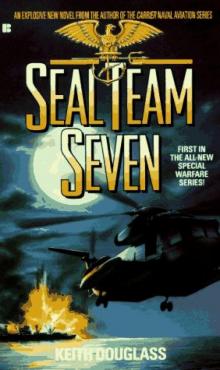 Seal Team Seven 01 - Seal Team Seven
Seal Team Seven 01 - Seal Team Seven Payback sts-17
Payback sts-17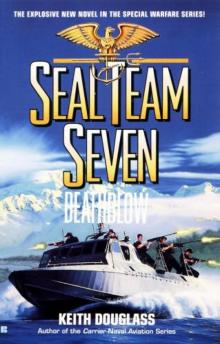 Death Blow sts-14
Death Blow sts-14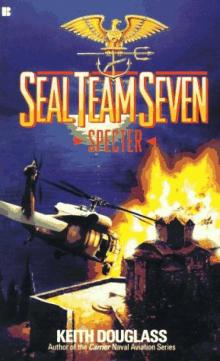 Seal Team Seven 02 - Spector
Seal Team Seven 02 - Spector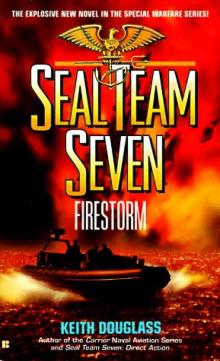 Seal Team Seven 5 - Firestorm
Seal Team Seven 5 - Firestorm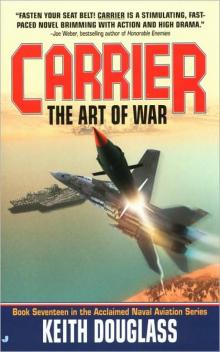 The Art of War c-17
The Art of War c-17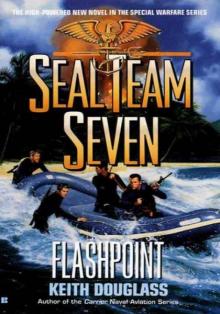 Flashpoint sts-11
Flashpoint sts-11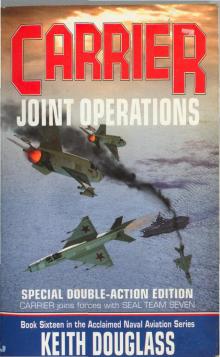 Carrier - Joint Operation Book 16
Carrier - Joint Operation Book 16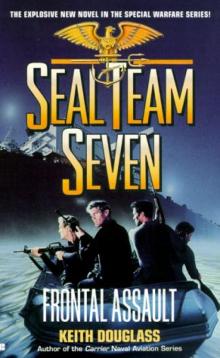 Frontal Assault sts-10
Frontal Assault sts-10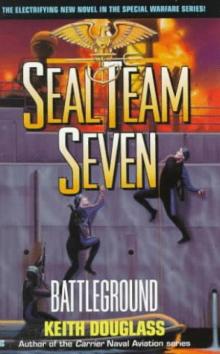 Battleground sts-6
Battleground sts-6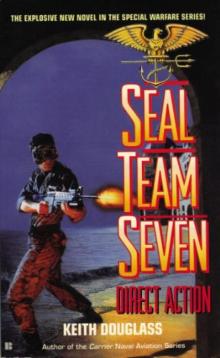 Direct Action sts-4
Direct Action sts-4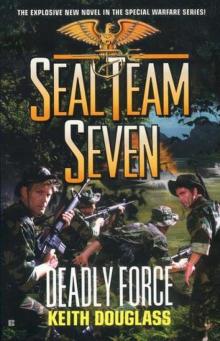 Deadly Force sts-18
Deadly Force sts-18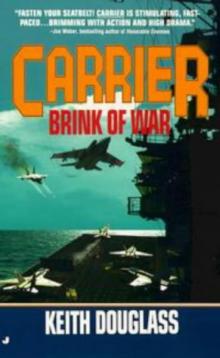 Carrier 13 - Brink of War
Carrier 13 - Brink of War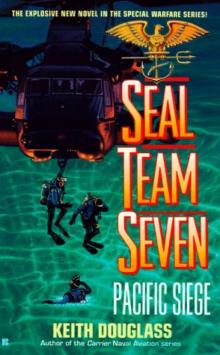 Pacific Siege sts-8
Pacific Siege sts-8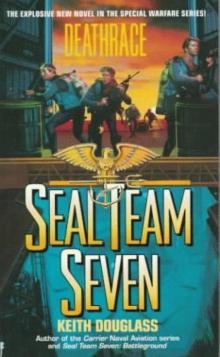 Deathrace sts-7
Deathrace sts-7